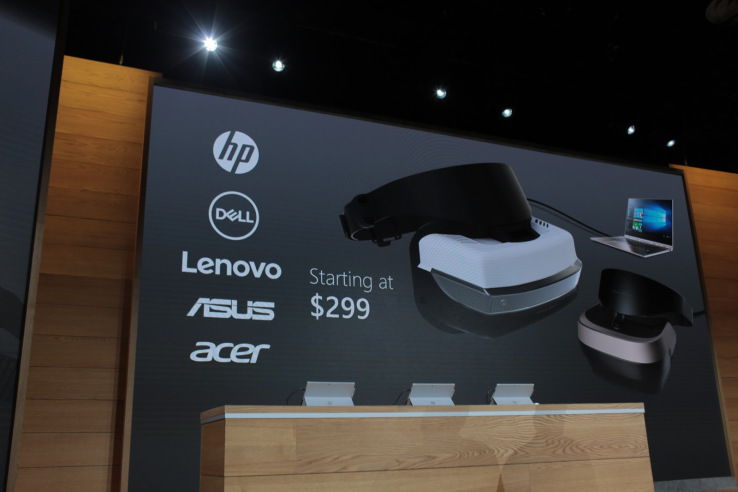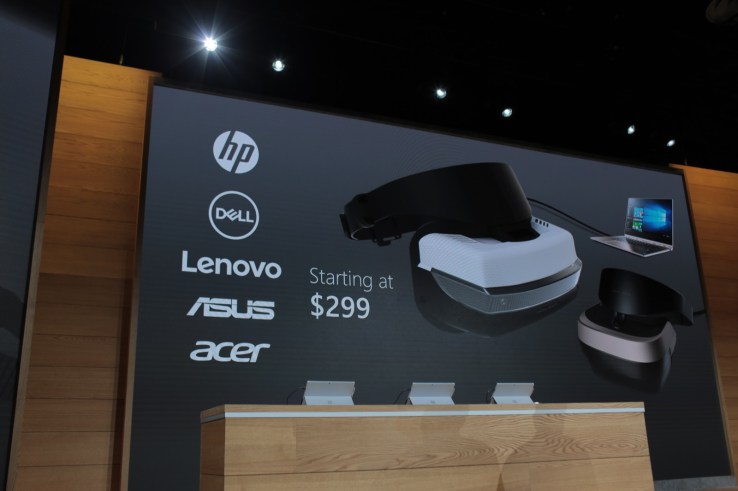

Microsoft revealed that partners including Asus, Dell, Lenovo and others are going to be building VR headsets for use with the Windows 10 Creators Update, and that these would start at $299, but we don’t know much beyond that about this third party-supported push into Windows VR. Microsoft told Polygon we’ll find out more in December, however, including possibly what a ranged lineup of VR headset offerings looks like in terms of varying capabilities and price points.
Microsoft HoloLens project lead Alex Kipman told the blog that specs including field-of-view and resolution for some of the third-party offerings will be unveiled at upcoming WinHEC (Windows Hardware Engineering Community) events in December. For now, what Kipman could reveal included confirmation that they’ll be fully VR headsets, meaning there’s no transparency for the display, and that they’re require a cable.
All the hardware will offer six degrees of freedom and inside-out tracking, however. This is huge, in that it means owners of the headset won’t require any additional lighthouses or equipment to experience VR software where they can move around in space. That’s a big advantage over more complicated room-scale VR setups including the more expensive Oculus Rift and HTC Vive.
Kipman also strongly suggested to Polygon that the headsets will hit a number of price points, and that hardware at these differing costs will offer different experiences. It’ll be similar to how differently priced PCs have different specs and experiences, essentially. That means you’re definitely not going to get an Oculus-like experience in a $299 headset but it’s an approach that’s much more likely to appeal to a more mass market audience for VR.
As for when people can actually get their hands on this new partner hardware, all Microsoft has said is that it’ll arrive around the same time as the Creators Update, which is set to launch sometime early next year.

